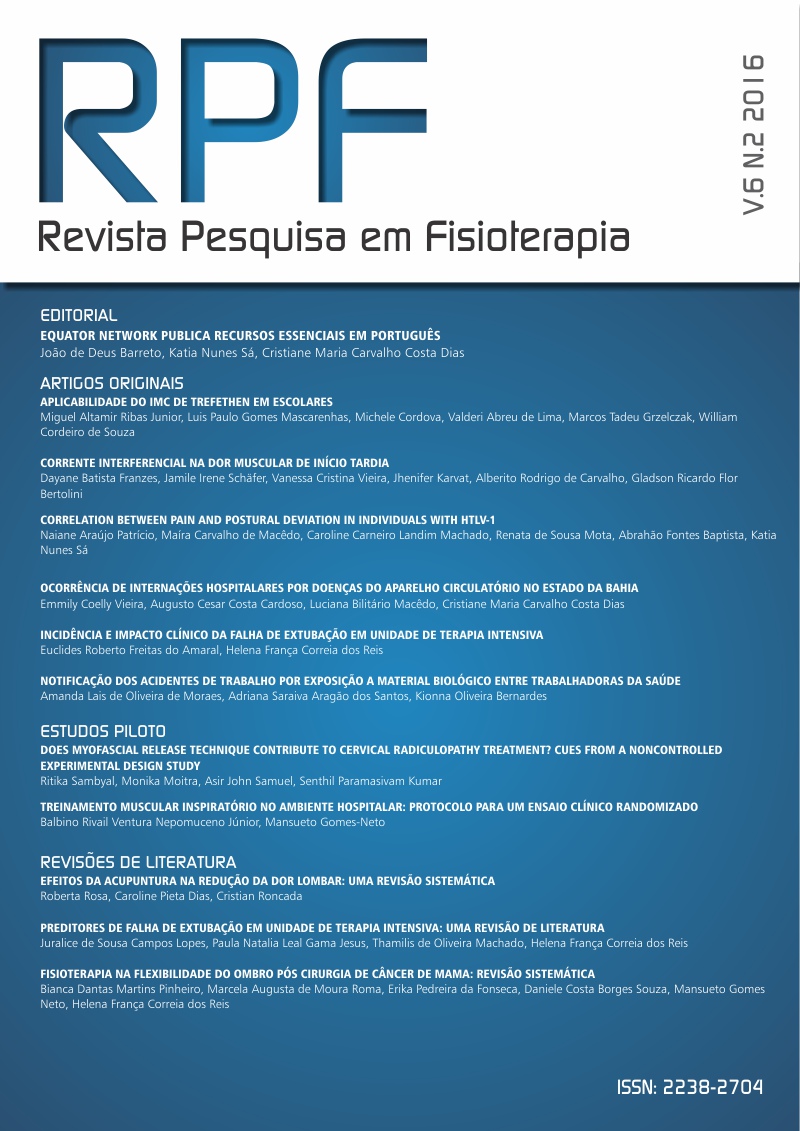CORRELATION BETWEEN PAIN AND POSTURAL DEVIATION IN INDIVIDUALS WITH HTLV-1
DOI:
https://doi.org/10.17267/2238-2704rpf.v6i2.917Keywords:
HTLV-1, Pain, Posture, PhysiotherapyAbstract
Introduction: The myelopathy associated with HTLV-1 (HAM/TSP) produces, among other problems, postural abnormalities and chronic pain that may affect quality of life and functional independency. Objective: To assess correlation between postural abnormalities and pain intensity in HAM/TSP individuals. Methods: A cross sectional study including probable and defined HAM/TSP according to the World Health Organization criteria. Participants were selected from the BAHIANA School of Medicine and Public Health Multidisciplinary Assistance and Research Individuals with HTLV Reference Center, in Salvador, Bahia, Brazil. The free SAPO® software v. 0.67 and its protocol to measure selected angles and body alignment on sagittal view were employed. To assess pain the Brief Pain Inventory (BPI) was applied. To test the correlation between variables the Spearman test was employed, with an alpha of 5% and 80% of power. Results: The sample was composed of 56 individuals. The majority of individuals (35; or 62,5%) has been using walking support. A weak correlation was observed between postural deviation of body angle and reactive behavior on work activities (p=0,05). Associations were found between body angle and lumbar pain (p=0,05) and knee pain with ankle deviation (p=0,02). Conclusion: Postural body deviation prevents difficulties to work and lumbar and knee pain were associated with deviations on body alignment and ankle angle.



